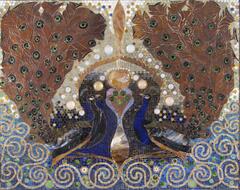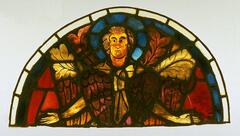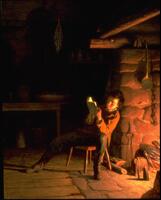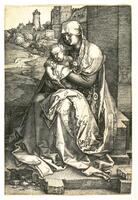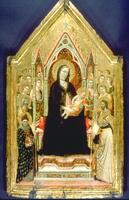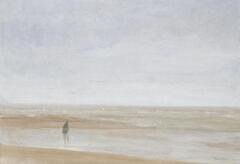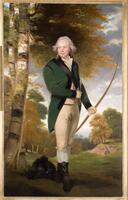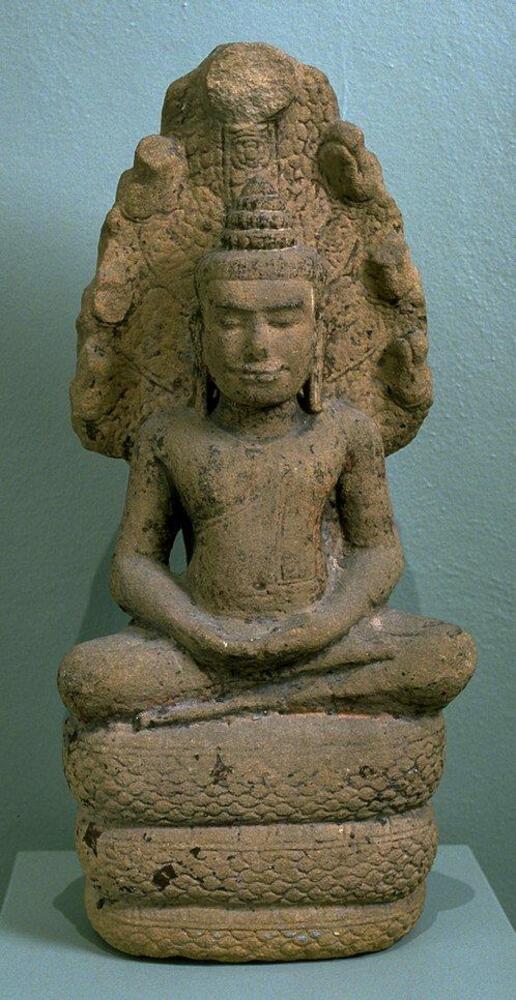Essay: Cambodian Buddha seated under Muchalinda
Background
The Khmer capital at Angkor was the center of a powerful, opulent empire that included most of continental Southeast Asia. The Angkor period is noted for the vast number of breathtaking monuments constructed from the late ninth to the thirteenth century. Ranging from relatively small structures to the gigantic Baphuon and Angkor Wat, these temple-mountains are profusely decorated with sculptures—both large scale stone and metalwork—the most important artistic traditions during the period.
The closely related Mon and Khmer peoples entered Southeast Asia along migration routes from southern China in the ninth century BCE. The Khmer settled in the Mekong River Valley. Around the 6th century ACE they laid the foundation for their great empire centered at Angkor (near modern Siem Reap) in Cambodia.
In the eighth century, missionaries from Ceylon (present-day Sri Lanka) introduced the Mon to Theravada Buddhism. The Mon embraced Buddhism enthusiastically and conveyed it to the Khmer. The two Indian religious systems--Hindu and Buddhist—existed side by side without conflict. Although Buddhism was the official religion of the Mon and the Khmer, in popular practice it incorporated many local cults. The Khmer maintained the Hindu Buddhist culture but placed added emphasis on the Hindu concept of sacred kingship.
The history of Angkor can be read in the magnificent structures built to glorify its monarchy. Ultimately, however, obsession with palaces and temples led the Khmer rulers to neglect the elaborate agricultural system—part of Angkor's heritage from Funan, China—that was the empire's most important economic asset.
Object Information
----Italicized text from labels written by Anna Sloan.
Sculptures of the Buddha seated beneath the great serpent Muchalinda are based on stories that recount the long meditation of Shakyamuni (the Buddha-to-be) at Bodh Gaya. In order to interrupt his practice, the evil Mara conjured up heavy rains. Shakyamuni was so deep in his thoughts, however, that he remained undisturbed. Alarmed that the Buddha-to-be might drown, the great serpent Muchalinda coiled his body to lift Shakyamuni above the waters and then spread his great hood to shelter the Buddha from the downpour.
Although the pose (half-lotus, ardha padmasana) and mudra (meditation, dhyana) of this Buddha are familiar to us from other Buddhist cultures and representations the protection of Mucalinda and the presence of the crown are more common in Southeast Asia.
Regarding the snake, several reasons for its popularity have been suggested. Images of the scene were popular in peninsular Southeast Asia, likely because they were compatible with local snake cults. Snakes are common in Southeast Asia so the frequent portrayal of this scene may have arisen to placate them by honoring their positive qualities. Some sources say they were revered as fertility symbols. The snake is the spirit of the irrigating waters in mainland Southeast Asia. The snake was also associated with healing.
The crown became popular in Southeast Asian art in contradiction to Pali texts that stipulate the Buddha be dressed as a monk without jewels or headdress and with identifying characteristics such as an ushnisha or distended earlobes that refer to his once having worn princely jewels. One explanation of the crown in SE Asian art is an anecdote recounting that the Buddha converted a heretic king by donning royal attire and magically appearing as the Universal Monarch, expanding himself to enormous size. But also more generally, the Khmer placed emphasis on the Hindu concept of sacred kingship. UMMA’s Buddha comes from central Thailand at a time when it was under the domination of the Khmer Empire. During the 12th and 13th centuries, the Khmer kings stressed their close relationship to, if not their complete identification with, the Buddha. Thus, the crown and jewelry adorning these images are similar to those that were worn by the earthly kings.
Bibliography
- Marcus, Margaret F. “Buddha Sheltered by Mucalinda,” Cleveland Museum of Art, The Burlington Magazine, Vol. 108, No. 758 (May, 1966), pp. 258-263 http://www.jstor.org/stable/874930 - A similar work to ours in the Cleveland Museum of Art. Accessed 9/29/08
- Tingley, Nancy. Doris Duke, The Southeast Asian Art Collection. NY: The Foundation for Southeast Asian Art and Culture, 2003, pp. 28-29.
Web Resources
- CountryStudies, U.S. Library of Congress – Thailand: The Mon and the Khmer http://countrystudies.us/thailand/4.htm - a short history of Khmer (Cambodian) influence in Thailand at the time UMMA’s sculpture was made. Accessed 9/29/08
- Asia Society: http://www.asiasocietymuseum.com/region_object.aspRegionID=3&CountryID=8&ChapterID=16&ObjectID=572 - Bronze, but otherwise very similar to our piece. Cambodian. Accessed 9/29/08
- Thai Buddhism.net – http://www.thaibuddhism.net - Created in conjunction with Northern Illinois University. Accessed 9/29/08
4 Links
Created For
K-12 EducatorK-12 Student
Museum Visitor
UMMA Docent
UMMA Staff
University Faculty
University Student
Rate this Resource
AVG: 0 | Ratings: 0
& Author Notes
Creative Commons by-nc-sa (Essay by KT Lowe, BA, UM 2008Supervision by Pam Reister, Associate Curator for Education)
Last Updated
March 6, 2017 1:19 a.m.Report
Reporting Policy



